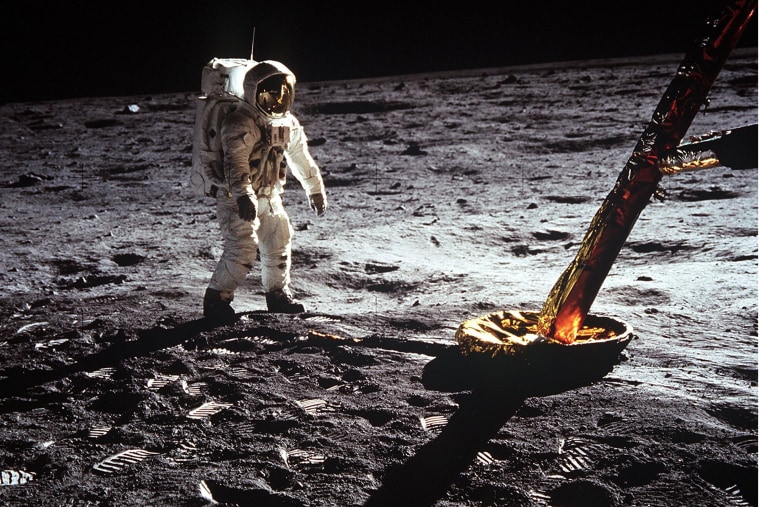More than 50 years since the first moon landing, the United States finds itself in yet another space race back to the moon and, hopefully, to Mars. But today’s race has different players and opponents, including billionaire Elon Musk and China.
Despite Musk’s Starship rocket self-destructing three minutes into flight in April, both Musk, via his company SpaceX, and NASA are determined to not only bring humans back to the moon but also to Mars as soon as 2040.
“I think it’s important that humanity become like a multi-planetary species, and that we extend consciousness and life as we know it beyond Earth,” Musk told NBC’s Tom Costello in 2021.
China’s growing space presence is another motivator for the U.S. to amp up efforts to get back to the moon and to Mars. U.S. generals have warned of China’s intentions to create a military in space, including already establishing a robotic base on the far side of the moon.
“In the short term, we need to be competitive here,” Rep. Adam Smith, D-Wash., Chair of the House Armed Services Committee, told Costello. “China, I think, is very aggressive. President Xi Jinping has made it clear that he thinks that the U.S. is a disappearing power, and he wants to replace us.”
There are multiple challenges facing NASA, like simply keeping a crew fed, which is why some are looking into the agency’s original plans from the 1960s to get to the moon using nuclear energy.
“The technology from the 60s never was given a chance to achieve its full potential,” Dr. Stephanie Tompkins who heads the Defense Advanced Research Projects Agency (DARPA) told Costello, “When I go back and I read the reports from those days, I am continually reminded that we all get to stand on the shoulders of giants.”
However, others like astrophysicist Neil DeGrasse Tyson are skeptical of elements of the push.
“I’m all for people in space. But to accomplish scientific goals, the robot can live off of sunlight and you can’t. Robot is not going to cry because we ran out of money and we can’t bring you back,” Tyson told Costello.
Despite the challenges ahead, Musk and NASA are determined to win the space race.
“The risk is not zero for this,” Musk told Costello in 2021, “It’s a very hard thing. It’s one of the hardest things. You just can’t get to zero risk. We will do everything we can to get as close as possible to zero risk.”
For more on the modern-day space race, check out the latest episode of Meet The Press Reports.
